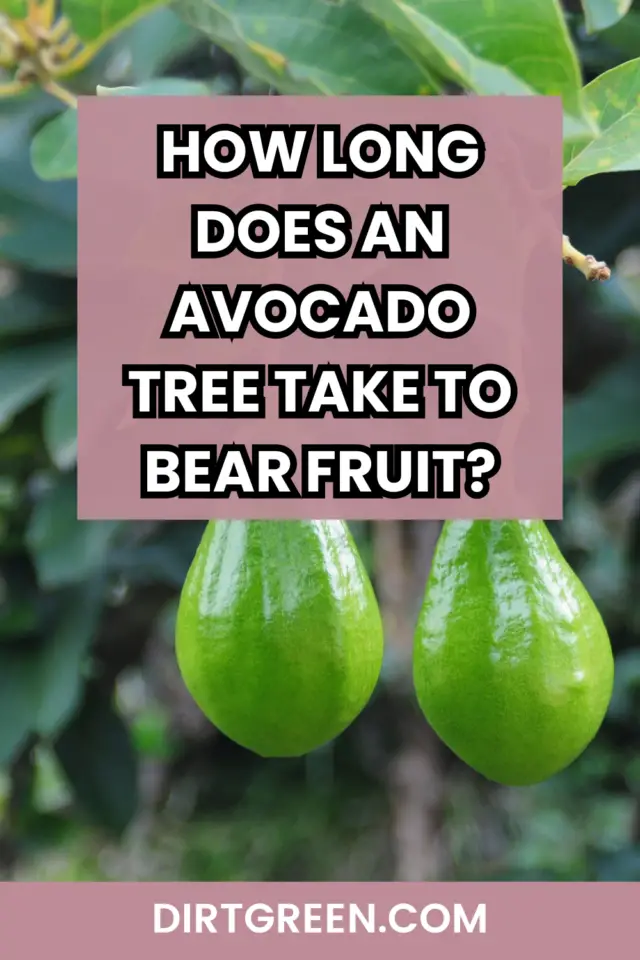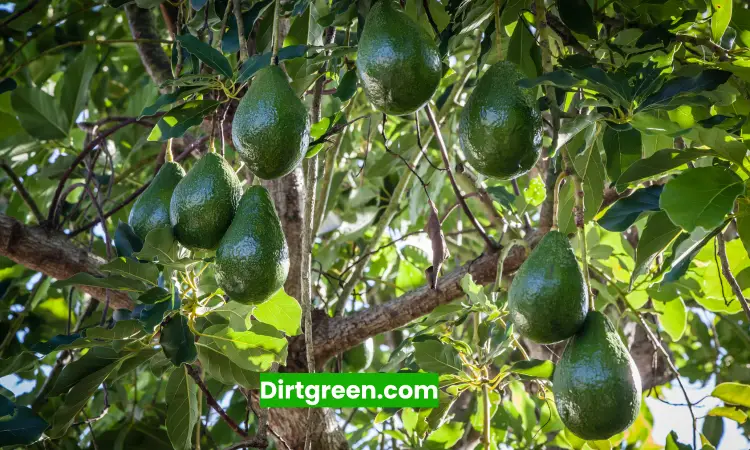Avocados have become super popular lately.
Everyone loves their creamy texture and healthy goodness!
So, it’s no surprise that more and more people are trying to grow their avocado trees.
But how long do you have to wait for that first homegrown avocado?
Well, the short answer is: it depends. Generally, it takes between 3 and 15 years for an avocado tree to start producing fruit. A lot of things can affect how long you wait, so let’s break it down.
First, let’s talk a bit about avocado trees.
They’re actually tall, evergreen trees that love warm weather.
There are different types of avocado trees, each with its personality.
Some are better at handling cold weather than others.
And here’s a fun fact: avocado flowers are tricky!
They open as male flowers first, then turn into female flowers.
This helps make sure different trees pollinate each other.
So, what makes one avocado tree start fruiting faster than another? We’ll dive into that next!

Factors Affecting Avocado Tree Fruit Production Timeline
1. Method of Propagation
One of the most significant factors in determining how quickly an avocado tree will produce fruit is how the tree was propagated:
Seed-Grown Trees: If you’ve planted an avocado pit from a store-bought fruit, be prepared for a long wait.
Trees grown from seed typically take 10-15 years to produce fruit, if they fruit at all.
There’s also no guarantee that the fruit will resemble the parent avocado, as commercial avocados are often hybrids.
Grafted Trees: Nursery-bought avocado trees are usually grafted, meaning a cutting from a productive tree has been attached to an established rootstock.
These trees can produce fruit much more quickly, often within 3-5 years after planting.
2. Variety
Different avocado varieties have different maturation rates:
• Hass avocados, the most popular commercial variety, typically take 5-7 years to bear fruit.
• Fuerte avocados may produce fruit in as little as 3-5 years.
• Bacon avocados can start fruiting in 3-4 years.
• Some dwarf varieties bred for container growing may produce fruit in 3-5 years.
3. Growing Conditions
Avocado trees are particular about their environment. Optimal growing conditions will lead to faster growth and earlier fruit production:
Climate: Avocados thrive in Mediterranean-like climates with mild winters and warm summers. Most varieties prefer temperatures between 60-85°F (15-29°C). Extreme cold or heat can delay fruit production or damage the tree.
Soil: Well-draining, slightly acidic soil (pH 6-6.5) is ideal. Poor soil conditions can stunt growth and delay fruiting.
Sunlight: Avocado trees need full sun for optimal growth and fruit production. Insufficient sunlight can significantly slow development.
Water: Consistent moisture is crucial, especially for young trees. However, avocados are susceptible to root rot, so proper drainage is essential.
Nutrients: Regular fertilization with a balanced, nitrogen-rich fertilizer can promote healthy growth and earlier fruiting.
4. Pollination
Avocado trees have a unique flowering mechanism that can complicate pollination:
• Type A varieties (like Hass) have flowers that open as female in the morning and male in the afternoon.
• Type B varieties (like Fuerte) have flowers that open as male in the morning and female in the afternoon.
While avocados can self-pollinate, having both Type A and Type B trees nearby can improve pollination and lead to a better fruit set.
5. Tree Health
Overall tree health plays a crucial role in fruit production:
• Stress from pests, diseases, or environmental factors can delay fruiting.
• Proper pruning can encourage better structure and air circulation, potentially leading to earlier fruit production.
• Young trees putting energy into vegetative growth may delay fruiting.
The Avocado Tree Growth Timeline
Year 0-1: Germination and Early Growth
If starting from seed, the pit will sprout within 2-8 weeks under ideal conditions. The young seedling will focus on developing its root system and the first set of true leaves.
Years 1-2: Establishing the Young Tree
The tree continues to grow, developing a stronger trunk and more branches. Proper care during this stage is crucial for future fruit production.
Years 3-5: Potential First Flowering
Grafted trees or fast-maturing varieties may begin to flower during this period. However, it’s common for the tree to drop these first flowers without producing fruit.
Years 5-7: First Fruit Production (for many varieties)
Many avocado varieties will begin to bear fruit during this time frame, especially if they’re grafted trees grown under optimal conditions.
Years 7-15: Increasing Fruit Production
As the tree matures, fruit production typically increases. A healthy, mature avocado tree can produce hundreds of fruits per year.
Years 15+: Peak Production
Avocado trees can continue to produce fruit for many decades with proper care. Some trees have been known to produce for 200-400 years!
Tips for Encouraging Earlier Fruit Production
While you can’t rush nature entirely, there are some steps you can take to potentially speed up fruit production:
1. Start with a grafted tree: This can cut several years off your wait time compared to growing from seed.
2. Choose a fast-maturing variety: Some varieties, like Fuerte or Bacon, tend to fruit earlier than others.
3. Provide optimal growing conditions: Ensure your tree gets plenty of sunlight, well-draining soil, and consistent moisture.
4. Fertilize appropriately: Regular feeding with a balanced, avocado-specific fertilizer can promote healthy growth.
5. Protect from extreme weather: If you live in an area with cold winters, consider planting your avocado tree near a south-facing wall for added warmth.
6. Prune strategically: Proper pruning can encourage a strong structure and better fruit production.
7. Consider planting multiple trees: Having both Type A and Type B varieties can improve pollination.
8. Be patient: Remember that even with optimal care, avocado trees take time to mature and produce fruit.
Common Challenges and Solutions
While waiting for your avocado tree to bear fruit, you may encounter some challenges:
Challenge: Slow growth
Solution: Ensure the tree is getting enough sunlight, water, and nutrients. Consider having your soil tested to check for any deficiencies.
Challenge: Leaf burn or cold damage
Solution: Protect young trees from extreme temperatures. Use shade cloth in very hot areas and cover trees or bring potted specimens indoors during cold snaps.
Challenge: Flowers dropping without producing fruit
Solution: This is normal for young trees. Ensure adequate pollination by planting multiple trees or hand-pollinating flowers.
Challenge: Pests or diseases
Solution: Monitor your tree regularly for signs of problems. Treat issues promptly with appropriate organic or chemical controls.
Challenge: Fruit drop
Solution: Some fruit drop is normal. Ensure consistent watering and proper nutrition to minimize excessive dropping.
The Rewards of Growing Your Own Avocados
While it does require patience to grow avocados, many gardeners find the wait worthwhile. Here are some benefits of growing your own avocado tree:
• Fresh, homegrown fruit: Nothing beats the taste of a perfectly ripe avocado picked from your own tree.
• Cost savings: Once established, a mature avocado tree can produce hundreds of dollars worth of fruit each year.
• Environmental benefits: Growing your own food reduces transportation costs and packaging waste.
• Aesthetic value: Avocado trees are attractive evergreens that can enhance your landscape.
• Educational opportunity: Growing avocados can be a great way to teach children about plant life cycles and patience.
Conclusion
Growing an avocado tree can be a rewarding long-term project for patient gardeners.
While it typically takes 3-15 years for an avocado tree to bear fruit, the exact timeline depends on factors like propagation method, variety, growing conditions, and overall tree health.
How quickly your tree bears fruit depends on things like how you started it (from a seed or a grafted tree), the type of avocado you chose, how well you care for it, and its overall health.
If you want to speed things up a bit, choose a tree that’s already been grafted and give it the best possible care. But remember, even with the best efforts, avocado trees have their schedule!




